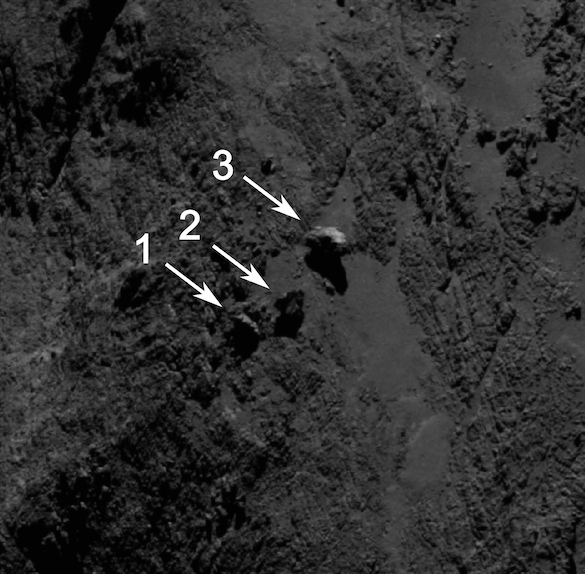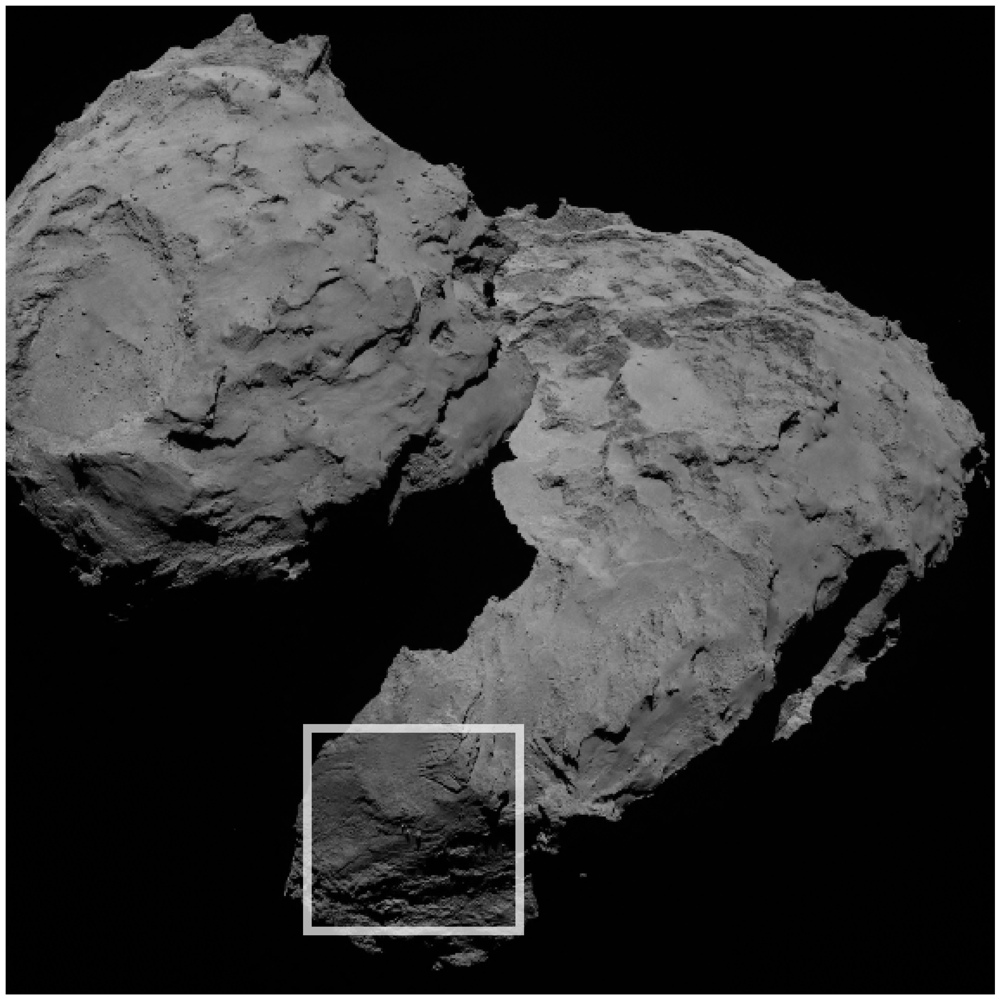On Comet, 'Ballerina' Rocks Perform Balancing Act (Photos)

Three boulders balancing like ballerinas on the surface of a comet were spotted by the Rosetta space probe.
The Rosetta spacecraft first spotted the three boulders on the surface of Comet 67P/Churyumov-Gerasimenko in September 2014, with mission scientists unveiling the photos today (May 18). Images taken from different angles reveal that the three closely spaced boulders all appear to be similar to "balancing rocks" seen on Earth, which often look as though they might topple over at any moment.
"How this apparent balancing rock on Comet 67P/C-G was formed is not clear at this point," Holger Sierks, of the Max Planck Institute for Solar System Research (MPS) in Germany and principle investigator for the OSIRIS imaging system aboard Rosetta, said in a statement from the European Space Agency (ESA). [Amazing Photos from the Rosetta Comet Mission]
The three balancing rocks are located in the Aker region on the larger lobe of the comet (which looks somewhat like a rubber duck). The largest boulder (labelled "3" in the images) is approximately 98 feet (30 meters) in diameter and appears to be sitting on the edge of a small depression in the surface, according to the statement from ESA. The largest known boulder on the comet's surface is called Cheops, and measured approximately 147 feet (45 m) across.
ESA released three different images of the boulders, taken on three different occasions: Aug. 16, 2014; Sept. 16, 2014; and Sept. 19, 2014.
In the Aug. 16 image, one of the boulders looked as though it might be a thin and narrow column of rock, but the later images show more width and depth.
"Interpreting images of the comet's surface can be tricky," Sierks said in the statement. Depending on the viewing angle, illumination and spatial resolution, very different and sometimes even misleading impressions are created.
Breaking space news, the latest updates on rocket launches, skywatching events and more!
On Earth, there are multiple ways that "balancing rocks" can come to be placed in their easily upset positions. It's possible glaciers moved the boulders there from a different location. On Earth, such migratory stones are called "erratics," according to the press release. The motion and activity of the comet may also have moved the rocks. Or, the three boulders may have been part of larger rocks, and that soft material was eroded from around the base, leaving a small contact area with the surface.
The Rosetta spacecraft arrived at Comet 67P/Churyumov–Gerasimenko on Aug. 6, 2014, and is still orbiting the icy body. The Philae lander hitched a ride with Rosetta, and jumped onto the comet's surface on Nov.12, 2014.
Follow Calla Cofield @callacofield. Follow us @Spacedotcom, Facebook and Google+. Original article on Space.com.

Calla Cofield joined Space.com's crew in October 2014. She enjoys writing about black holes, exploding stars, ripples in space-time, science in comic books, and all the mysteries of the cosmos. Prior to joining Space.com Calla worked as a freelance writer, with her work appearing in APS News, Symmetry magazine, Scientific American, Nature News, Physics World, and others. From 2010 to 2014 she was a producer for The Physics Central Podcast. Previously, Calla worked at the American Museum of Natural History in New York City (hands down the best office building ever) and SLAC National Accelerator Laboratory in California. Calla studied physics at the University of Massachusetts, Amherst and is originally from Sandy, Utah. In 2018, Calla left Space.com to join NASA's Jet Propulsion Laboratory media team where she oversees astronomy, physics, exoplanets and the Cold Atom Lab mission. She has been underground at three of the largest particle accelerators in the world and would really like to know what the heck dark matter is. Contact Calla via: E-Mail – Twitter



